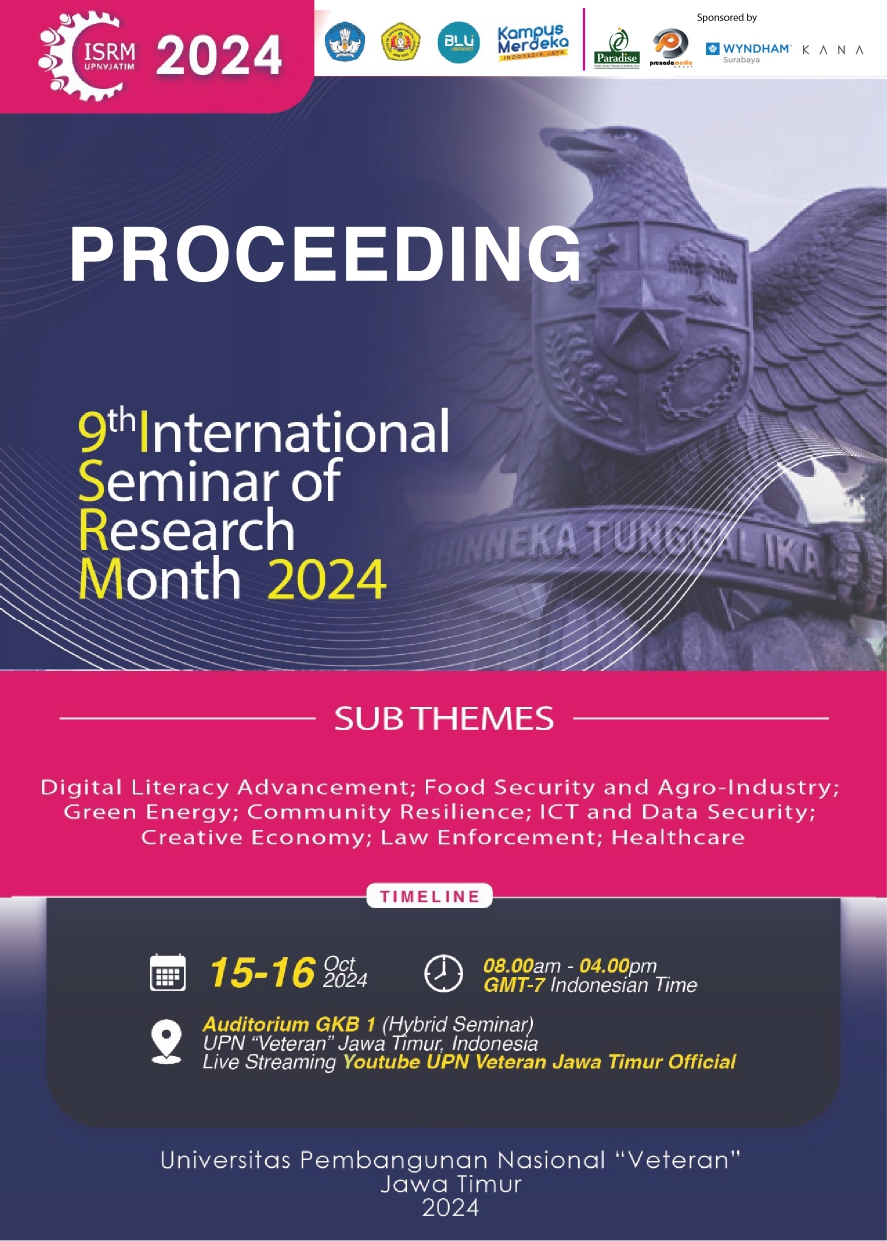Implementation of Urban Farming Through Integrated Training in Gunung Anyar District
DOI:
https://doi.org/10.11594/nstp.2025.41101Keywords:
Environmental implications, green open space, urban farmingAbstract
Agriculture is the main sector in fulfilling the country's food supply. Urban areas are currently densely populated. The increase in population is also in line with the reduction in the amount of agricultural land. So a concept is needed to overcome these problems to support food security programs, food independence, and food sovereignty. This concept is urban farming or urban agriculture. This community service aims to control environmental implications for MSMEs through mentoring activities by conducting outreach and training on the implementation of urban farming. As an effort to increase urban food security, meet local food needs, maintain cleanliness, and preserve the surrounding environment to reduce carbon footprints and increase green open space. This activity was carried out in RW 01, Gunung Anyar District, Surabaya City. Providing outreach regarding the meaning of urban farming, the importance of urban farming, how to cultivate it according to the type of plant, and providing solutions regarding the impact of production waste produced. As well as providing integrated training regarding various cultivation techniques according to the type of plant through direct practice.
Downloads
References
Abdurrohman, A., Arkasala, F., & Nurhidayah, N. (2021). Penerapan konsep Urban Farming-Based Resilinet City dalam Pengembangan Kota yang berketahanan pangan di kota Surakarta. Desa-Kota, 3(2), 162. https://doi.org/10.20961/desakota.v3i2.48012.162-170
Harya, G. I., Fadil, C., & Kusumastuti, E. (2023). Penguatan skill berwirausaha UMKM dengan implementasi strategi pemasaran digital melalui social media di Kelurahan Kepanjen Kidul Kota Blitar. Jurnal Pengabdian Cendikia, 2(9), 84–92. https://doi.org/10.5281/zenodo.10440678
Harya, G. I., Hanani, N., Asmara, R., & Muhaimin, A. W. (2024). Study of technical efficiency of the cocoa industry using data envelopment analysis. Revista Iberoamericana de Viticultura Agroindustria y Ruralidad, 11(33), 130–145.
Harya, G. I., Hanani, N., Asmara, R., & Muhaimin, D. A. W. (2023). Dynamic capabilities for leading industries: proof of export commitment of chocolate products. Bulgarian Journal of Agricultural Science, 29(4), 579–589.
Harya, G. I., Sudiyarto, Budiwitjaksono, G. S., & Patiung, M. (2020). Competitiveness and Processing of Processed Cocoa Industry in Improving the Welfare of People’s Cocoa Farmers in East Java. NST Proceedings, 2019, 302–310. https://doi.org/10.11594/nstp.2019.0443
Harya, G. I., & Wahyuningrum, W. (2023). Analisis kelayakan usahatani kunyit petani desa petiken yang tergabung dalam kelompok tani BPP Driyorejo Kabupaten Gresik. Jurnal Ilmiah Manajemen Agribisnis, 11(2), 112–120. https://doi.org/10.33005/jimaemagri.v11i2.17
If’all, Unsunnidhal, L., & Hakim, I. (2023). Tumbuh bersama: Mendukung pertanian lokal, ketahanan pangan, kelestarian lingkungan, dan pengembangan masyarakat. Jurnal Pengabdian West Science, 2(05), 364–373. https://doi.org/10.58812/jpws.v2i5.376
Indah, P. N., Harya, G. I., Pratiwi, L. F. L., & Widayanti, S. (2019). Analysis of Factors Influencing Processed Cocoa Industry in East Java Indonesia. Proceedings of the International Conference on Science and Technology (ICST 2018), 652–656. https://doi.org/10.2991/icst-18.2018.133
Kusumaningrum, A., Widiyantono, D., Hasanah, U., Utami, D. P., Wicaksono, I. A., & Windani, I. (2024). Penerapan Konsep Urban Farming Melalui Pemanfaatan Lahan Terbatas di Pemukiman Wilayah Perkotaan. Surya Abdimas, 8(1), 64–72. https://doi.org/10.37729/abdimas.v8i1.3655
Kusumastuti, E., Nugroho, S. D., & Harya, G. I. (2024). Pemanfaatan limbah organik menjadi ecopillow di Sekolah Menengah Pertama Kulon Progo Yogyakarta. Jurnal Agro Dedikasi Masyarakat, 5(1), 1–8.https://doi.org/10.31764/jadm.v5i1.23048
Lestari, T. R. . (2020). Penyelenggaraan keamanan pangan sebagai salah satu upaya perlindungan hak masyarakat sebagai konsume. Jurnal Masalah-Masalah Sosial, 11(1), 57–72.
Pothukuchi, K. (2018). Vacant land disposition for agriculture in Cleveland, Ohio: Is community development a mixed blessing? Journal of Urban Affairs, 40(5), 657–678.
Pranata, A., Siregar, A. M., Dharma, B., Damanik, W. S., & Nasution, A. R. (2021). Mamfaatkan limbah skrap aluminium untuk knalpot sepeda motor Vega ZR Tahun 2011 Guna Mengurangi Polusi Udara. Jurnal Rekayasa Material, Manufaktur Dan Energi, 4(2), 160–167. https://doi.org/10.30596/rmme.v4i2.8077
Sa’diyah, K., Ramadhani, L., & Harya, G. I. (2024). Hazard Analysis and Critical Control Point (HACCP) Pada Rancangan Produk Minuman Sari Buah Jeruk PT Zestful Drink Innovation. Jurnal Pengabdian Kepada Masyarakat, 1(1), Hal 1–19. https://doi.org/10.3342/jkepmas.v1i1.233
Septya, F., Rosnita, R., Yulida, R., & Andriani, Y. (2022). Urban farming sebagai upaya ketahanan pangan keluarga di Kelurahan Labuh Baru Timur Kota Pekanbaru. RESWARA: Jurnal Pengabdian Kepada Masyarakat, 3(1), 105–114. https://doi.org/10.46576/rjpkm.v3i1.1552
Sukardi, S. (2011). Formulasi definisi agroindustri dengan pendekatan backward tracking. Jurnal Pangan, 20(3), 270.
Sumanto, & Lesmayanti, S. (2010). Teknologi Budidaya Tomat. In Balai Pengkajian Teknologi Pertanian Sulawesi Tengah.
Downloads
Published
Conference Proceedings Volume
Section
License

This work is licensed under a Creative Commons Attribution 4.0 International License.
Authors who publish with this proceedings agree to the following terms:
Authors retain copyright and grant the Nusantara Science and Technology Proceedings right of first publication with the work simultaneously licensed under a Creative Commons Attribution License that allows others to share the work with an acknowledgement of the work's authorship and initial publication in this proceeding.
Authors are able to enter into separate, additional contractual arrangements for the non-exclusive distribution of the proceedings published version of the work (e.g., post it to an institutional repository or publish it in a book), with an acknowledgement of its initial publication in this proceeding.
Authors are permitted and encouraged to post their work online (e.g., in institutional repositories or on their website) prior to and during the submission process, as it can lead to productive exchanges, as well as earlier and greater citation of published work (See the Effect of Open Access).














